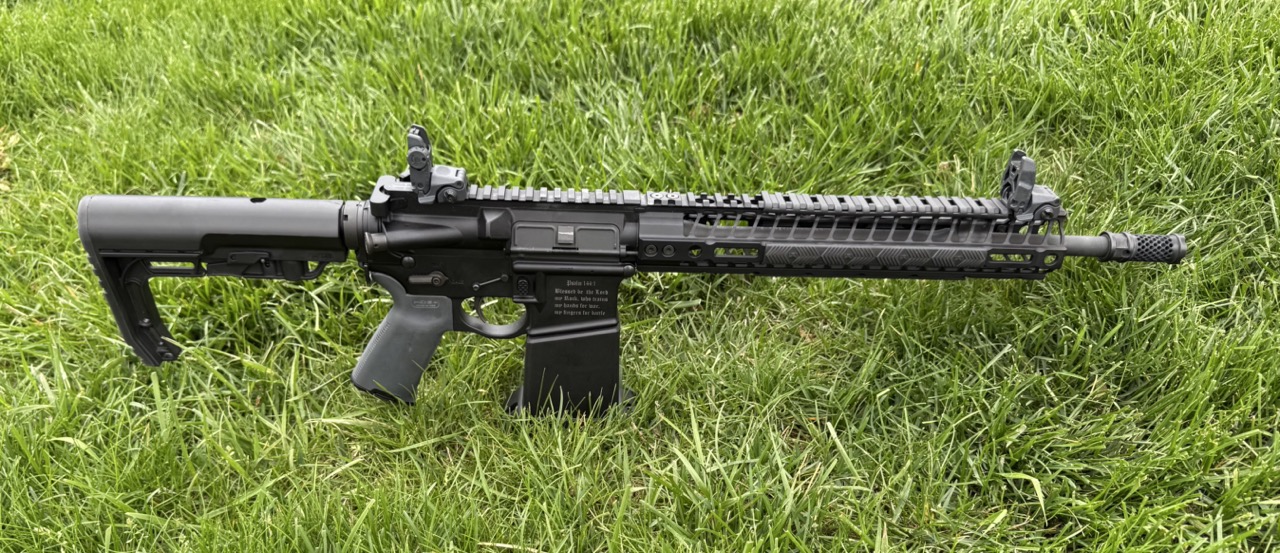Essential AR15 Maintenance Tips for Maximum Reliability and Long Service Life

Cajun Arms Gunsmithing West Chester PA
Essential AR15 Maintenance Tips for Maximum Reliability and Long Service Life
Your AR‑15 is more than a tool — it’s an investment in safety, training, and fun at the range. Proper upkeep separates rifles that run forever from rifles that fail at the worst possible moment. Below is a practical, no‑nonsense AR‑15 maintenance checklist that blends hands‑on steps, inspection guidance, and storage tips so your rifle stays reliable whether it’s for home defense, competition, or training. Cajun Arms covers training • sales • gunsmithing, and we recommend combining regular owner maintenance with periodic professional inspections.
Why maintenance matters: reliability, legality, and safety
A neglected AR isn’t just inconvenient — it’s a liability. Failures can create unsafe conditions, stop you when you need the rifle most, or lead to damage that’s expensive to fix. Routine care reduces wear, prevents malfunctions, and preserves accuracy. Think of maintenance as risk management: a few minutes of routine work prevents bigger problems later.
We will outline AR‑15 reliability tips
1. Clean smart — when and how
The AR‑15 is a tolerant platform, but dirt, carbon, and corrosive residue will eventually bite you. Clean after heavy use, after exposure to water/salt/dust, or whenever accuracy or function drops. You don’t need an obsessive “white glove” clean every range trip, but you do need a consistent routine.
Basic cleaning checklist (after each significant use):
-
Field‑strip: separate upper, lower, and bolt carrier group (BCG).
-
Bore and chamber: run a bore snake or rod with patches; brush the chamber and star lugs.
-
BCG: scrub carbon from the bolt, cam pin, firing pin, and carrier interior.
-
Rails and receiver: wipe rails and mating surfaces, remove grit from the charging handle area.
-
Inspect gas tube and gas key for obvious carbon obstruction.
AR‑15 cleaning and lubrication is critical for reliabilty.
Pro tip: Use a chamber brush and a clean patch for the throat area — that’s where pressure and fouling concentrate. Avoid excessive solvents on polymer parts.
2. Lubrication — where and how much
Lubrication reduces friction and wear. A dry BCG is the most common contributor to malfunctions; a properly lubed AR runs smoother and tolerates higher round counts.
Where to apply lube:
-
Light coat on upper receiver rails.
-
Generous but not puddling lube on bolt cam, bolt body, and gas rings.
-
Few drops on charging handle rails and cam pin contact points.
-
Wipe excess — you want a film, not blobs that collect grit.
Pro tip: Use a dedicated gun oil or lubricant designed for modern sporting rifles — not WD‑40. If you shoot in dusty environments, lean toward lighter application and more frequent cleaning.
3. Inspect wear points regularly — find problems early
Catch wear before it becomes a failure. Inspect these items on a schedule (after several range trips or every few hundred rounds):
-
Gas rings: bolt should remain elevated slightly when removed from carrier.
-
Extractor and spring: check for chipped extractor teeth and spring tension.
-
Bolt lugs: look for cracks or rounding.
-
Cam pin: check for unusual wear on edges.
-
Castle nut/receiver end plate: ensure torque and retention.
-
Barrel nut torque and gas block alignment — especially after changing barrels or handguards.
Pro tip: Keep a small inspection log: date, round count, and any parts replaced. That habit saves time and money.
4. BCG health — the heart of the rifle
Treat the bolt carrier group (BCG) like your AR’s engine. Neglect here causes the majority of malfunctions.
BCG maintenance routine:
-
Remove and clean the bolt, firing pin, cam pin, and carrier interior.
-
Inspect extractor tension and the extractor spring.
-
Replace O‑rings and extractor springs per manufacturer recommendations or at first sign of wear.
-
Check the firing pin tip for deformation or burrs.
Pro tip: If you see cracked bolt lugs or chipped extractors, stop using the rifle and have a qualified gunsmith (like our Cajun Arms gunsmiths) evaluate it.
5. Ammo, parts, and torque management
Poor‑quality ammo and loose fasteners are easy ways to create problems.
-
Use reliable ammunition appropriate for your barrel and gas system.
-
Check handguard/barrel nut torque after installation changes; loose components affect headspace and gas alignment.
-
Ensure the gas tube alignment and roll pin are secure.
-
Monitor barrel throat and crown for erosion with high round counts.
Pro tip: After installing a new barrel or gas block, run a break‑in procedure per manufacturer guidance and re‑inspect torque after the first few hundred rounds.
6. Storage and corrosion prevention
How you store an AR influences lifespan as much as how you use it.
-
Store in a dry, climate‑controlled area.
-
Use a light corrosion protectant on metal surfaces for long storage.
-
If possible, store muzzle‑down so oil doesn’t migrate into stocks or buffer tubes.
-
Secure storage: locked safe or cabinet per responsible ownership practices.
Pro tip: Use desiccant packs in storage safes in humid climates and periodically cycle the rifle out for inspection.
7. Train with and maintain your rifle
Ironically, one of the best ways to keep an AR reliable is to shoot it regularly. Routine use reveals small issues early and keeps you familiar with the platform.
-
Regular range sessions let you detect accuracy changes, unusual wear, and feeding issues.
-
Pair live‑fire with your AR‑15 maintenance checklist so you clean/inspect on a schedule tied to round counts.
Long‑tail keywords integrated: AR‑15 training and maintenance, how often to clean AR‑15.
Pro tip: Track round counts for each rifle so you can anticipate parts replacement (extractor springs, gas rings, etc.) before failures occur.
8. When to seek professional gunsmithing
Some jobs are best left to trained techs:
-
Headspace checks, barrel replacement, or complex gas system tuning.
-
Crack repair, barrel crowning, or extractor/breechface issues.
-
If you notice persistent failures after owner troubleshooting, bring the rifle in.
Pro tip: Cajun Arms offers gunsmith inspections and can perform detailed BCG rebuilds, headspace verification, and accuracy work — schedule a professional once a year or sooner with high round counts.
Final word: consistent care extends service life
Your AR‑15 will serve you as well as you maintain it. Follow this AR‑15 maintenance checklist, keep a light log of round counts and parts changed, and combine owner maintenance with periodic gunsmith checks. If you’re unsure about any step or want a professional once‑over, bring your rifle to Cajun Arms — we offer training, sales, and gunsmithing to keep your rifle running reliably for years.
📍 Cajun Arms — Training • Sales • Gunsmithing
Want a printable AR‑15 maintenance checklist or hands‑on maintenance class? Ask about our shop walkthroughs and gunsmith Q&A sessions.
- Mental Preparation for Defensive Shooting Class
- Mental Preparation for Defensive Shooting: The Missing Link for CCW Holders
- 2025/26 Trends in CCW & Concealed Carry: What Every Responsible Gun Owner Should Know
- Mastering Speed and Precision in Defensive Pistol Training: A Complete Guide
- Why Small Unit Tactics (SUT) Don’t Work for Civilians — And What Does: A Cajun Arms Guide
- What to Expect in a Defensive Pistol Class
- Essential AR15 Maintenance Tips for Maximum Reliability and Long Service Life
- Bad Guys Come Out in the Heat
- Looking for “Firearms Training Near Me”? Here’s What to Expect—and How to Choose the Right Instructor
- Speed vs. Precision: What Matters Most in a Defensive Shooting?
- Dynamic Movement & Shooting: Train Like You Fight
- Firearms Training and Home Defense
- From Basics to Advanced: Tactical Shooting Courses at Cajun Arms
- Firearms Training Near Me - Cajun Arms West Chester, PA
- Master Your AR-15 with Expert Training at Cajun Arms
- Defensive Pistol Training for Self-Defense — Cajun Arms
- Choose the Best Home Defense Firearm — Cajun Arms Guidance
- Becoming a Firearms Instructor: The Path to Excellence
- Empowerment Through Precision: Elevating Your Self-Defense Firearm Skills
- Training Scars: Breaking Free From Flat-Range Habits
- Vehicle Defense
- WATCH WHAT YOU FEED YOUR GUN
- CAN YOU BE ACCOUNTABLE FOR YOUR SPEED?
- Training with Micro-Compacts
- A Follow Up to the “Hardest Shooting Fundamental”
- So You Want To Go Fast?
- The Hardest Shooting Fundamental: Mastering Follow-Through
- Why Are You Just Standing There? Shooting From Unconventional Positions
- New Gun, New Habits
- Home Defense Shotgun Set Up
- What Should I be Doing at the Range?
- Fighting From The Ground
- Take Charge of Recoil, don’t let it control you…
- Think Before You Speak
- Grab a Partner
- The Risks of Being Nice…
- Lead With Your Eyes (not your muzzle)
- Train as You Carry… Leave the competition and tactical gear behind
- KNIFE VS GUN - A quick scenario to ponder
- Frankengun vs. Factory: Choosing a Reliable AR for Self-Defense
- Memory - Program Yourself
- Training for Injury
- Lights and Lasers and YouTube Ninjas
- Our Stance on Your Stance
- Training for More Than One Attacker…
- Keep Your Head On - Consistency
- Defensive Shotgun Accessory Do’s and Don’ts
- Charlottesville - lies and hypocrites
- Keep Your Finger Off the Trigger…
- …and Re-holster
- Unauthorized persons…
- Focus on What will Save Your Life
- Train for Success with your Firearms
- Every Day is a Good Day to Be Ready
- Appendix Carry - Is it right for you?
- Learn to See the Light: Low-Light Firearms Training You Can Use
- Anti-Gun Sentiment on the Intarwebs…
- Avoidance and Awareness
- Point Shooting: Does it work? Do you know what it is?
- About your self-defense carry ammo...
- See the Whole Picture... Know how to reload reflexively
- One-Handed Shooting
- Every Bullet Has a Price...
- On Magazine Changes... fighting for your life
- There is Such a Thing as Too Fast...
- A Threat at Arm's Length
- In defensive shooting, missing your target has consequences...
- AR15 for Home-Defense
- Operating out of your Comfort Zone...
- Every Bullet Has A Price - Operational Speed
- Car and Truck Gun Safety: Protect Yourself Responsibly
- Keep a Clear Head
- Get Training!
- Women and Firearms at Cajun Arms

